Psoas major muscle Anatomy, Origin, Insertion, Function, Exercise
Table of Contents
Introduction
- The psoas muscle is a paraspinal muscle located deep in the body, very close to the spine & the brim of the lesser pelvis. At its distal end, it attaches to the iliacus muscle to form the iliopsoas muscle. This depth, combined with the fact that the psoas arises from the sides of the 5 lumbar vertebrae, means it plays a main role in back health.
- It also slogs to both laterally flex the lumbar spine as well as stabilize & flex the thigh.
- It is needed for correct standing & sitting lumbar posture, stability of the hip joint, & walking & running.
Origin & insertion
- Psoas major is a long muscle lying immediately lateral to the vertebral column.
- It has an arising from the:
- Transverse processes of all the lumbar vertebrae
- Vertebral bodies of T12-L5
- Intervening intervertebral discs
- The fibers of the psoas major muscle extend inferolateral between the lesser pelvis towards the thigh.
- They pass along the pelvic brim & inferior to the inguinal ligament towards their joined insertion in the anterior thigh. Along its course, the lateral-most fibers of the psoas major muscle combine with the fibers of the iliacus muscle to form the iliopsoas muscle. Iliopsoas proceeds deep to the inguinal ligament & anterior to the joint capsule of the hip to insert onto the lesser trochanter of the femur.
Structure
- The psoas major muscle is divided into a superficial & a deep part. The deep portion arises from the transverse processes of lumbar vertebrae L1-L5. The superficial portion arising from the lateral surfaces of the last thoracic vertebra, lumbar vertebrae L1–L4, & the neighboring intervertebral discs. The lumbar plexus is situated between the 2 layers.
- Together, the iliacus muscle & the psoas major muscle form the iliopsoas, which is surrounded by the iliac fascia. The iliopsoas muscle passes across the iliopubic eminence through the muscular lacuna to its insertion on the lesser trochanter of the femur. The iliopectineal bursa separates the tendon of the iliopsoas muscle from the external portion of the hip-joint capsule at the level of the iliopubic eminence. The iliac subtendinous bursa is located between the lesser trochanter & the attachment of the iliopsoas.
Function
The psoas major muscle action includes:
- To merge the upper body to the lower body, the outside to the inside, the appendicular to the axial skeleton, & the front to the back, with its fascial relationship.
- Merge with the iliopsoas muscle, the psoas is a major contributor to the flexion of the hip joint in a supine position or standing.
- Stabilizes the lumbar spine during sitting.
- Work as a stabilizer of the femoral head in the hip acetabulum in the 1st 15 degrees of movement.
- Unilateral contraction of the psoas muscle also helps with lateral movement & bilateral contraction can help elevate the trunk from the supine position.
- The psoas major muscle also acts in conjunction with the hip flexors to elevate the upper leg towards the body when the body is static & pull the body towards when the leg is fixed.
- The psoas major muscle is also 1 of the core muscles.
Relations
- Superiorly, the psoas major muscle lies posterior to the diaphragm. The Quadratus lumborum is lie lateral to the muscle. In the abdomen, the psoas major muscle is related to a number of retroperitoneal structures. The inferior vena cava is lie medial to the right psoas major muscle. On the left, the abdominal aorta is situated medial to the psoas major muscle. The sympathetic trunk & aortic lymph nodes are also situated medially. Other retroperitoneal structures connected to the muscle are the kidneys &ureters, the gonadal vessels & the genitofemoral nerve.
- Because its site is instantly lateral to the vertebral column, the roots of the lumbar plexus are embedded in the belly of the psoas major muscle as they live in the vertebral canal. The plexus forms in the muscle with its branches seem from its lateral border.
- In the thigh, the psoas major contributes to the floor of the femoral triangle. The iliopsoas tendon is located deep in the fascia lata, sartorius muscle, rectus femoris muscle & the deep femoral artery. It resumes the joint capsule of the hip by the iliac bursa. The pectineus muscle & the femoral vein are medial periods the femoral nerve is lateral to the muscle.
Blood supply
- The psoas major muscle is supplied importantly by the iliolumbar branch of the internal iliac artery. The lumbar branches of the aorta or the obturator branch of the internal iliac artery & also branches of the external iliac &femoral arteries contribute to the blood supply
- Venous drainage of the psoas major mirrors the arterial supply. It drains back into the femoral and external iliac & internal iliac veins & also directly into the inferior vena cava.
Nerve Supply
- Branches from the ventral rami of lumbar spinal nerves (L1, L2, & L3) before they join to form the lumbar plexus. The lumbar plexus is embedded within the Psoas major muscle & its branches emerge from it.
Clinical Importance
Tightness of the psoas major can result in spasms or lower back pain by compressing the lumbar discs. A hypertonic & inflamed psoas can lead to irritation & entrapment of the ilioinguinal and the iliohypogastric nerves, resulting in a sensation of heat & water running down the front of the thigh.
Psoas major can be palpated with active flexion of the hip. A positive psoas contracture test & pain with palpation reported by the patient specify clinical significance. Care might be taken around the abdominal organs, especially the colon when palpating deeply.
The aspect of a protruding belly can visually indicate a hypertonic psoas, which pulls the spine forward while pushing the abdominal contents outward.
The psoas major lies posterolateral to the lumbar sympathetic ganglia, & the needle tip will often pass through the psoas major during a lumbar sympathetic block.
The genitofemoral nerve is formed in the midsection of the psoas muscle by the union of branches from the anterior rami of L1 & L2 nerve roots. The nerve then courses inferiorly within the psoas muscle & finally “pierces” the muscle & emerges on the anterior surface of the psoas distally. The nerve then traverses the retroperitoneum, descending over the anterior surface of the psoas major muscle.
Psoas syndrome refers to a group of symptoms that result from damage to the psoas major muscle. Lower back pain is the most common symptom, but pain may also present in surrounding parts such as the lumbosacral region, groin & thigh. This may/may not cause walking difficulties.
Psoas syndrome is determined by doing a physical exam of the spine, hip & lower limb. It can be difficult to diagnose & is also misdiagnosed. It is also incorrect for a herniated intervertebral disk or arthritis. However, physical therapy is an effective treatment for all 3 conditions, meaning psoas syndrome is sometimes treated without even being diagnosed.
Psoas major muscle Stretching Exercise
- A Psoas major muscle is in charge of flexing as well as laterally rotating the thigh at the hip joint. This also helps in flexion as well as stabilization of the trunk & helps with good posture. An iliopsoas includes the iliacus, psoas major, as well as psoas minor muscles,
- which combine together and form the iliopsoas muscle.
- Psoas major stretching is a great exercise to increase flexibility to improve posture as well as stability of the trunk. This exercise has many health benefits & fitness levels.
- This muscle group attaches the spine to the femur. A psoas starts from the lower six vertebrae of the spine.
- They meet & inlay on the top of the femur, or upper leg bone. A Psoas major works to maintain the trunk while activities namely lifting, pulling, as well as pushing.
- A Psoas major also moves the knees toward the chest. Such as swinging the leg forward when running & when doing kicking movements in sports such as soccer.
- Performing the iliopsoas stretch gives you so many boons in daily life performance.
There are different types of Psoas major stretches:
- Standing Psoas major Stretch
- Kneeling Psoas major Stretch
- Psoas major Bed Stretch
- Table Psoas Stretch
- Runner’s Lunge
- Hips Elevated stretch
- Supported Side-Plank Reach
- Seated butterfly stretch
- Knee to chest stretch
- Pigeon Pose
- Standing Stance Pelvic Tilt
- Cobra Stretch
- Wall psoas Stretch
- Sumo Squat Stretch.
Standing psoas major muscle Stretch
- Standing psoas major muscle Stretch is beneficial for the person who cannot take the kneeling position.
- How to stretch: Stand tall with the feet around a hip distance apart.
- Place the left foot forward into the split stance.
- Engage the core muscle as well as tuck the pelvis. The patient may place the hands on the left leg.
- Keep the back leg straight and gently lunge forward with the left leg.
- The patient may feel a stretch in the front of the hip, groin, and thigh on the right side.
- Pause the lunge position for 20-30 seconds. The person might not feel any low back pain. If you do, release the stretch.
- Gently return to the starting position & change sides.
- Do the standing psoas major muscle stretch 2-3 times on each side.
Kneeling psoas major muscle Stretch
- How to do stretch: Take a half-kneeling position with the left leg about 2 feet in front of the right leg.
- A left knee might form a 90-degree angle. The patient was required to use the mat for cushioning.
- Put the hands on the left knee, & keep an upright posture.
- After that, incline slightly forward till you perceive the stretch in the front of the hip, groin, & thigh of the right side.
- Pause the kneeling position for 20 – 30 seconds. The patient might not feel any low back pain. If the patient does, release the stretch.
- Slowly come back to the starting position & repeat to the other side.
- Do the kneeling psoas major stretch 2-3 times on each side.
Glute Bridge
- A glute bridge assists you to stretch the psoas major muscle during also strengthening the glute muscles.
- How to stretch: Place the exercise mat on the ground.
- Lie in the supine position with the arms at the sides, both knees bent as well as your feet flat on the ground
- Gain the glutes & raise the hips to create the bridge between the knees & shoulders as well.
- Lift the hips until you perceive the stretch in the iliopsoas muscle in both legs.
- If you experience lower back pain, down the hips slightly, but keep the glutes tight.
- The patient cannot always feel the stretch so do not maintain forcing through back pain.
- Hold the bridge position for 20-30 seconds.
- Lower the hips to the ground & repeat.
- Do the glute bridge 10 times.
- This also assists you in walking & doing the daily tasks.
- This increases blood supply to the front of the thighs.
- Stretching gives relaxation to the psoas minor muscles.
- Also, improve the range of movement around the hip joint. Such as hip flexion, & the lateral rotation

Psoas major Bed Stretch
- How to do this stretch: Lie in the supine position on the bed & position yourself with the left leg closest to the edge of the
- bed.
- Slowly let the left leg hang down to the side of a bed.
- The right leg may stay bent with the foot on the bed.
- The patient can feel the stretch in the hip flexor.
- Ideally, the foot will hover over the ground instead of touching it. But this is okay if it does touch the ground.
- Deepen the stretch by slowly bending the knee. The person should feel the across the thigh and front of the hip.
- Hold the hanging position for 20 – 30 seconds.
- Come back to the left leg of the bed & rotate so the right side is closest to the edge of the bed.
- Do the hip flexor bed stretch 2-3 times on each side.

Runner’s Lunge
- How to do this stretching: Start kneeling with both knees on the ground.
- Then, bring the left foot forward so that the left knee is directly above the left ankle.
- Simultaneously extend the right leg behind you so that the right knee is behind the right hip as well as the top of the foot
- is on the floor.
- Rest the hands on the left thigh.
- For a deeper stretch, drive the top of the back foot into the ground.
- Pause for 60-120 seconds, then repeat the movement on the opposite side.
- It is one repetition. Do it 3-4 times.
Hips Elevated stretch
- How to do the stretching exercise: Lie down in the supine position with the extended in front of you & the arms at the sides.
- After that, put the foam roller or block under the hips as well as low back.
- So the hips are elevated and the head & shoulders are resting on the ground.
- Bend the right knee & wrap the arms around the shin to bring it closer to the chest.
- Hang there for 60 – 120 seconds.
- Then repeat the movement on the opposite side.
High Lunge
- How to stretch: Stand tall with the feet around shoulder-width apart and the hands at the sides.
- Step the right foot a couple of feet behind you & bend the left knee 90 degrees, so it is directly above the left
- ankle.
- Press the right toes as well as the ball of the foot into the ground and straighten the arms directly overhead.
- Hang up for one to two minutes before repeating on the opposite side.
Table Psoas Stretch
- How to stretch: Choose a table that is slightly lower than the hip level.
- Stand with the left side next to the table & lift the left leg behind you as well as put it onto a table with a knee facing down.
- The leg will be aligned. The patient may put the folded towel under the knee to relieve any pressure from a table.
- Place the left hand on the table in front of you. The right leg should be slightly flexed.
- Gently move into the stretch by raising the chest up tall as well as opening up the hip flexor area.
- Pause when you feel the stretch in the left hip.
- Hold the standing position for 20- 30 seconds.
- Let go of the stretch & repeat on the opposite side.
- Do the table psoas stretch three times on each side.
Runner’s Lunge
- How to do this stretching: Start kneeling with both knees on the ground.
- Then, bring the left foot forward so that the left knee is directly above the left ankle.
- Simultaneously extend the right leg behind you so that the right knee is behind the right hip as well as the top of the foot
- is on the floor.
- Rest the hands on the left thigh.
- For a deeper stretch, drive the top of the back foot into the ground.
- Pause for 60-120 seconds, then repeat the movement on the opposite side.
- It is one repetition. Do it 3-4 times.
Hips Elevated stretch
- How to do the stretching exercise: Lie down in the supine position with the extended in front of you & the arms at the sides.
- After that, put the foam roller or block under the hips as well as low back.
- So the hips are elevated and the head & shoulders are resting on the ground.
- Bend the right knee & wrap the arms around the shin to bring it closer to the chest.
- Hang there for 60 – 120 seconds.
- Then repeat the movement on the opposite side.
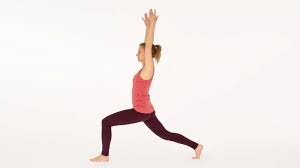
High Lunge
- How to stretch: Stand tall with the feet around shoulder-width apart and the hands at the sides.
- Step the right foot a couple of feet behind you & bend the left knee 90 degrees, so it is directly above the left
- ankle.
- Press the right toes as well as the ball of the foot into the ground and straighten the arms directly overhead.
- Hang up for one to two minutes before repeating on the opposite side.
Half Frog
- How to do this stretch: Begin lying on your stomach with the legs extended behind you.
- Rest the forehead on the back of the hands.
- Bend the left knee so that it is parallel to the left hip, as well as flex the left foot.
- The left shin should be aligned with the right leg.
- Press the left knee into the ground to bring the left inner thigh as close to the mat as possible.
- Hold for 60-120 seconds before repeating on the opposite side.

Hero Pose
- How to do this stretching: Begin kneeling with both knees on the ground.
- Then put a block or even foam roller between the feet, just below the tailbone.
- Flex the knees to lower yourself down on the block or roller.
- Maintaining the knees together & the tops of the feet pressed into the ground.
- Sit tall with the shoulders directly above the hips.
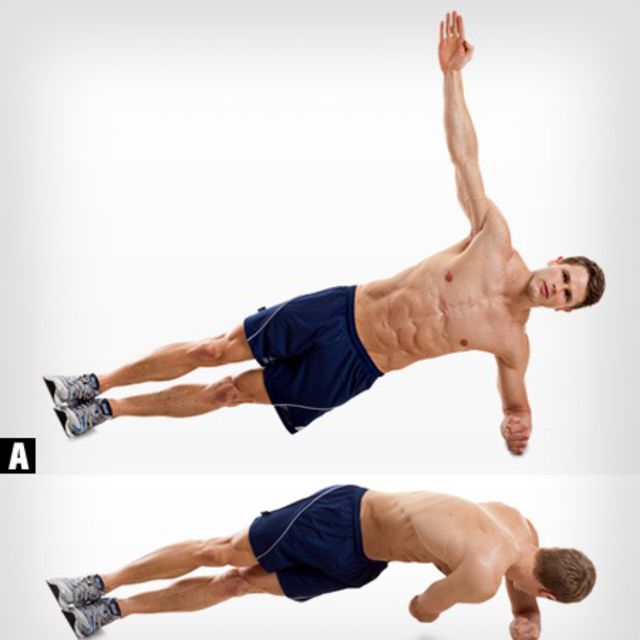
Supported Side-Plank Reach
- How to do this stretching exercise: Begin kneeling with both knees on the ground, then extend the right leg out to the side.
- Simultaneously place the left palm on the ground, directly below the left shoulder, & reach the right arm over the
- right ear.
- Your body should form a direct line from your right ankle to your right hand.
- Press the outer edge of your right foot into the floor and rotate your shoulders so they are side by side with the wall in
- front of you.
- Pause for one to two minutes, then repeat the movement on the opposite side.

Seated butterfly stretch
- How to perform the stretching: Sit on the ground or on an exercise mat.
- Place the soles of the feet together in front of you.
- Let the knees flex out on either side.
- Maintain the back straight as well as the abs engaged.
- Relax the knees as well as allow them to down towards the floor.
- Hold the butterfly pose for 10 – 30 seconds.
- To feel a deeper stretch, lean forward while maintaining the back straight.

Knee to chest stretch
- How to do this stretch: Lie down in the supine position with the legs extended on the floor.
- Gently bend the left knee toward the chest.
- Maintaining the back flat, pull the left knee as close to the chest as possible without discomfort.
- Stretch the right leg out as far as possible & squeeze the glute.
- Holding time is 10-15 seconds.
- Return to the starting position & repeat with the opposite leg.
Pigeon Pose
- How to do this stretching: Begin in the plank position.
- Lift the right foot off the floor and slide it forward so your knee is on the ground next to your right hand and your foot
- is near your left hand.
- Exactly where your knee and toes drop will depend on your flexibility.
- Slide your left leg back as far as you can while maintaining your hips square.
- Lower yourself to the ground and onto your elbows, bringing your torso down as far as possible.
- Hold the stretch without letting your chest drop.
- When you feel like you have gotten a good stretch, switch sides.
Standing Stance Pelvic Tilt
- How to do stretch: Stand up tall with good posture, chest pointed up as well as both shoulders back.
- Push the pelvis back & under.
- Hold the standing pose for 10 – 20 seconds.
- Release.
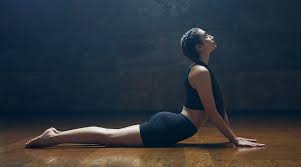
Cobra Stretch
- How to do stretching: Lie down in the prone position.
- Press through the hands to extend the back.
- Engage the glutes to stabilize a pelvis.
- When the patient feels stretched in front of the thigh, pause there for 10-15 seconds as well as release.
- Perform the cobra stretch 3-4 times.
Wall psoas Stretch
- How to do this stretch: Take the Lunge position in front of a wall.
- Rest your right foot on a wall.
- Drive the knee closer to a wall.
- Rotate the hips backward again.
- To lower the intensity of the stretch, drive the knee forward.
- Hold the psoas stretch for 15-20 seconds & do it 3-4 times.
Sumo Squat Stretch
- How to do this stretch: Stand tall with the feet wider apart.
- Laterally rotate the feet. The knees & toes are pointing out.
- Maintain the back straight as well as the chest facing up.
- Squat downward while maintaining the thighs facing out.
- Pause that squatting position for 10-15 seconds & perform it 2-3 times.
What are the safety precautions the patient should take while psoas major muscle stretches?
There is a guideline you have to follow while psoas major muscle stretch:
- The patient has to hold the psoas major muscle stretch for a certain amount of time, like 20 to 30 seconds. That way they are typically proposed after workouts, once the muscle group is comfortable. Since a psoas major muscle is attached to the hips & trunk, this is critical to do stretches with precise form. Go gradual when going into the stretch, as well as never ever go to the point of discomfort.
- To obtain the most out of the stretching routine, experts proposed doing flexibility exercises for all of the major muscles as well as tendon groups a minimum of 2 to 3 times a week.
- Do not perform the stretch of the muscle where you have prior injuries, namely a sprain, bursitis, fracture, etc.
- Do not bounce while the muscle stretch, this can cause injuries to the muscle.
- Never skip stretching, this may cause a reduction in the range of muscle. The patient may increase it by performing the daily stretch.
What are the Health Benefits of stretching the psoas major muscle?
There are so many benefits the patient may achieve by performing psoas major stretch. some are below:
- Tight psoas major muscles are the main problem for many people, especially if the patients spend most of the day seated. That is due to when we take a sitting position, an psoas major muscle shortens & becomes inactive. psoas major muscle stretch may lose the tight muscles.
- Daily stretching of the psoas major muscle can decrease the risk of injuries, stabilize the trunk, as well as increase posture.
- This can support your move from a sitting position to standing.
- Stretching an iliopsoas muscle can also reduce hip pain as well as improve hip mobility, And if you have pain in the lower back, performing the proper stretches may help decrease the pain & stop further injury.
- Reduce the risk of Iliopsoas muscle pain or psoas major muscle strain
Psoas major muscle strengthening Exercises
- After the follow of Electrotherapy & massage for 2 -3 days release muscle pain the physiotherapist then the therapist advised to you strengthening exercises release to muscle weakness.
- This strengthening exercise is always advised when you feel to release pain & when you feel comfortable.
- This all-strengthening exercise helps you with muscle weakness & pain.
- Glute Bridge
- Runner’s Lunge
- Hips Elevated
- High Lunge
- Half Frog
- Hero Pose
- Supported Side-Plank Reach
- Lying hip rotation
- Sidekick
- Hip raises
- Leg raises
- Frankensteins
- Hanging Leg Raise
- Bridging Psoas March
- Romanian Chair Leg Raises with Dumbbell
- boat pose
- lunge
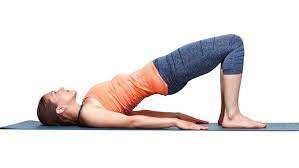
Glute Bridge:
- You are lying on the back with your arms at the sides knees bent & feet flat on the floor.
- Then Engage the glutes muscle & lift the hip joint to create a bridge between the shoulders & knees.
- Raise the hip joint till your feel a stretch in the psoas major muscle in both legs.
- When you feel lower back pain then lower your hip joint slightly, but must keep the glutes muscle tight.
- Hold this stretching position for 20-30 seconds.
- Then gradually return to the starting position.
- Perform glute bridge 10 times in 1 session & do 3 sessions per day.
Runner’s Lunge:
- You are initiated with a kneeling position with both knees on the ground.
- Then bring the right foot forward so that your right knee joint is directly above your right ankle.
- Extend the left leg behind so that your left knee joint is behind the left hip joint & the top of the foot is on the ground.
- Then Rest your hands on your thigh.
- For to deeper stretch, drive the top of the back foot into the ground.
- Hold for exercise position for 2 to 3 minutes, then repeat this motion on the opposite side.
- Perform Runner’s Lunge 10 times in 1 session & do 3 sessions per day.
Hips Elevated:
- You are lying on the back with your legs straight out in front of you & the arms at your sides.
- Then, place a foam roller & block under the hip joint & low back so that the hip joint is elevated
- Must keep the shoulder joint & head resting on the ground.
- Then Bend your left knee & wrap your arms around your shin to bring it closer to the chest.
- Hold for this exercise 10 seconds.
- Then gradually return to the initiating position & repeat on the opposite side.
- Perform hips elevated 10 times in 1 session & do 3 sessions per day.
High Lunge:
- You are standing with your feet shoulder-width apart & your hands at the sides.
- Step your left foot a couple of feet behind you & bend the right knee joint at 90 degrees, so it is directly above the right ankle joint.
- Press the left toe & the ball of your foot into the ground.
- Then extend the arms directly overhead.
- Hold for this exercise 10 seconds.
- Then gradually return to the starting position & repeat on the opposite side.
- Perform high lunge 10 times in 1 session & do 3 sessions per day.
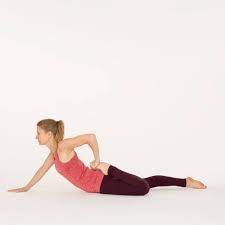
Half Frog:
- Initiate this exercise by lying on your stomach with your legs stretched out behind you.
- Relax the forehead on the back of the hands.
- Bend the right knee joint so that it stays parallel to your right hip joint & flex the right foot.
- Must be placed on the right shin parallel to your left leg.
- Then Press the right knee joint into the ground to bring the right inner thigh as close to the mat as possible.
- Hold for this exercise 10 seconds.
- Then gradually return to the starting position & repeat on the opposite side.
- Perform this pose 5 times in 1 session & do 3 sessions per day.
Hero Pose:
- Hero Pose exercise is Start with a kneeling position with both knee joints on the ground.
- Place a block & foam roller between the feet, just under your tailbone.
- Bend the knee joint to lower yourself down on the block & roller.
- Must be Keep the knees joint together & the tops of your feet pressed into the ground.
- You are sitting tall with the shoulder joint directly above your hip joint.
- For a deeper stretch in this pose, walk the hands behind you with fingers facing the toes & lean back slightly.
- Then Hold this pose for one to 2 minutes.
- Do this pose 5 times in 1 session & do 3 sessions per day.
Supported Side-Plank Reach:
- This exercise is to initiate with a kneeling position & both knees on the ground, then extend your left leg out to the side.
- Place the right palm on the ground, directly below the right shoulder joint.
- Try to reach the left arm over your left ear.
- Keep the body in a form a straight line from your left ankle joint to the left hand.
- Then Press the outer edge of the left foot into the ground & rotate the shoulder joint so that they are parallel to the wall in front of you.
- Hold this exercise position for 10 seconds & repeat the motion on the opposite side.
- Do this exercise 10 times in 1 session & do 3 sessions per day.
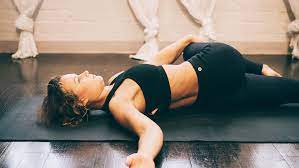
Lying hip rotation:
- You are lying on the ground with your feet flat & knee joints bent.
- Then Lay one ankle joint across the knee joint.
- Rotate the hip joint in & out.
- Hold this exercise position for 10 seconds
- Do this exercise 10 times in 1 session & do 3 sessions per day.
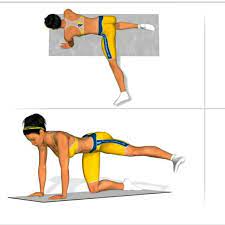
Sidekick:
- You are in a Standing position & raise one leg out to the side.
- Do this exercise on both sides & repeat between 10 times per side.
- When the strength increases, try adding light weights to the ankle joint.
- You are also Holding onto a wall for balance if you need it.
- Hold this exercise position for 10 seconds
- Perform this exercise 10 times in 1 session & perform 3 sessions per day.
Hip raises:
- You are lying on the ground with both feet planted on the floor near the buttocks.
- Then try to Raise your leg straight up must keep your thigh parallel.
- Raise the hip joint off the ground.
- Hold this exercise position for 10 seconds
- Perform this exercise 10 times in 1 session & perform 3 sessions per day.
Leg raises:
- Place your both hands & knee joints on the floor.
- Then Raise one foot back towards the sky & return to all fours.
- Hold this exercise position for 10 seconds
- Perform this exercise 10 times in 1 session & perform 3 sessions per day.
Frankenstein
- You are Standing up straight with your arms by your side & step forward with your left foot.
- Try to Swing your leg in the air as high as possible without arching your back.
- Then reach forward with your left hand to touch your right foot.
- Hold this exercise position for 10 seconds
- Perform this exercise 10 times in 1 session & perform 3 sessions per day.
Hanging Leg Raise
- First Hang from a pull-up bar that is high enough so that your feet do not touch the ground when the legs are extended.
- With a firm overhand grip try to flex your hip joint & knee joint simultaneously as you draw your legs out & up towards your chest without using the momentum.
- Then Slowly return to the starting position &repeat.
- Hold this exercise position for 10 seconds
- Perform this exercise 10 times in 1 session & perform 3 sessions per day.
Bridging Psoas March
- First Loop a mini band around the balls of your feet.
- Then place your heels on an elevated surface with your toes pointed up with your body straight.
- Try to Lift your hip joint, and engage your core & glute muscles.
- Try to bring one knee towards your chest but must keep the other leg straight.
- Must be Avoid the hip joint sagging your butt.
- Then Return to the working leg slowly & repeat on the other side.
- Hold this exercise position for 10 seconds
- Perform this exercise 10 times in 1 session & perform 3 sessions per day.
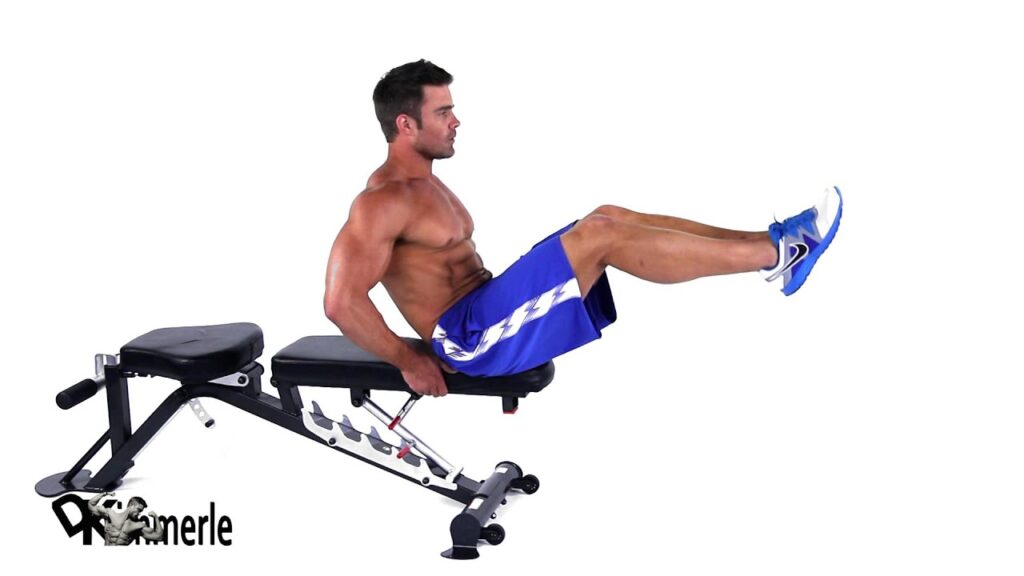
Romanian Chair Leg Raises with Dumbbell
- First, take to Position yourself in the Roman chair with a light dumbbell securely between your feet.
- Must be Keep your torso upright & press the lower back against the backrest while your forearms rest on the pad.
- Try to Lift your legs to parallel to the floor by flexing at the hip joint while keeping your knee joint straight.
- Then Slowly reverse to the starting position & repeat.
- Hold this exercise position for 10 seconds
- Perform this exercise 10 times in 1 session & perform 3 sessions per day.
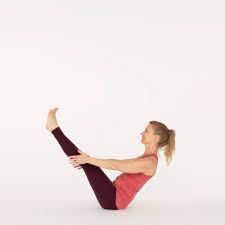
Boat Pose:
- You are sitting on a mat with your torso upright, knee joint bent & feet flat on the ground.
- Lean back slowly & tucking your tailbone under so that you are not putting pressure on it.
- While you leaning back try to extend your legs into the air & get your spine in a neutral position by eliminating the arching in your spine.
- Lift your chest &must keep your shoulders down & hold for time.
- Hold this pose for one to two minutes.
- Perform this pose 5 times in 1 session & perform 3 sessions per day.
Lunge:

- This exercise is to start in a standing position, look straight ahead & take a generous step forward with your right foot.
- Must be Keep your trunk upright throughout the movement.
- Then Bend your extended knee joint & transfer your weight onto your right leg.
- Try to lower yourself slowly into the lunge till your left knee joint is on the floor.
- Your right knee joint should be directly above your right ankle joint.
- Then Step back into a standing position & Repeat with your left leg in front.
- Hold this exercise position for 10 seconds
- Perform this exercise 10 times in 1 session & perform 3 sessions per day.
Yoga poses of psoas major muscle muscle
- Crescent Lunge
- Sugarcane Pose
- Dancer’s Pose
- Little Thunderbolt Pose.
- Reclining Hero Pose (Supta Virasana)
- Half-Reclining Hero Pose (Ardha Supta Virasana)
- Bow Pose (Dhanurasana)
- Camel Pose (Ustrasana)
- Firefly Pose (Tittibhasana)
- Low Lunge (Anjaneyasana)
- One-Legged King Pigeon Pose
- Tree pose

High Crescent Lunge
- How to stretch: Take the lunge position on the ground.
- Put one knee forward around 90 degrees bend, one leg behind straight.
- After that, raise both hands overhead & clasp them together.
- Now push the hip forward & downward, and keep the back straight.
- Now slowly lean back to feel the stretch into the quads.
- The patient can feel the stretch on the backward leg.
- Holding time is around 20 – 30 seconds & repeat 2-3 times on both sides.
Sugarcane Pose
- How to stretch: Stand tall with the feet wide apart.
- Now raise both hands on the sides at shoulder level.
- After that, lift one leg, bend at the knee & hold that ankle with the corresponding hand.
- Now bend at the waist & put the other hand on the floor, at the side, or in front of you.
- If the patient feels stretched, then hold for 20-30 seconds.
- Repeat 2-3 times.
Dancer’s pose
- How to stretch: Stand tall as well as feet wide apart.
- Now raise both hands forward at shoulder level.
- Raise one leg behind you & grasp that ankle with the corresponding hand.
- Now lift that leg upward behind you.
- Hold this stretching pose for at least 10-15 seconds.
- Perform 2 – 3 times.
Little thunderbolt pose
- How to stretch: Take the kneeling position on the mat.
- Now raise both hands upwards & hold the ankle.
- Slowly backward bend at the waist & try to put the head between both heels.
- Maintain the pose for 10-15 seconds to feel stretched on both quads.
- Gently release & do it 3-4 times.
Supta Virasana (Reclining Hero Pose)
- The patient is first to Perform Virasana means Exhale & lower the back torso toward the floor.
- The patient is First to lean onto the hands, then the forearms & elbow joints.
- Once the hand is on the elbow joint, place the hands on the back of the pelvis & release the lower back & upper buttocks by spreading the flesh down toward the tailbone.
- Then Sink the heads of the thighbones deep into the back of the hip joint sockets.
- It is alright to lift the knee joint a little away from the floor to help soften the groins
- The patient is also raising the knee joint a few inches with a help of a thickly folded blanket.
- In To begin position, stay in this pose for 30 seconds to 1 minute.
- Then Gradually extend the time & try to stay in the yoga pose for 5 minutes.
Ardha Supta Virasana (Half-Reclining Hero Pose)
- The patient is in a kneeling position towards the front of the mat.
- Bring the right foot flat to the mat & drop down inside the left foot.
- Walk the right foot out to the right as far as the patient needs to so that both sitting bones are flat on the mat.
- Check the left foot & toes point straight back& that the right knee points straight ahead.
- Place the hands behind, palms down & fingertips facing forwards & lean back till the feel the stretch in the left quad.
- The patient is come down onto the elbows or lowers the down to the mat, brings the arms up overhead & holds onto the opposite elbow joint.
- To increase the intensity, the patient hugs the right knee into the chest.
- The patient holds this pose for 3-5 slow breaths.
- Then Release the arms, bring the hands to the mat & carefully press the back up for the other side.
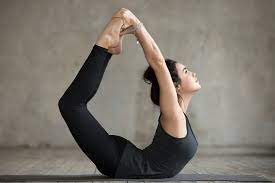
Dhanurasana (Bow pose)
- The patient is lying on the belly on the mat, with a blanket under the pelvis.
- Press all of the toes into the floor & then bend the knee joint, must keep the toes active.
- Grab the outer edges of the ankles with the hands & flex the feet strongly.
- During the inhalation, lift the rib cage & shoulders toward the ears.
- During the exhalation lengthen the tailbone & kick the legs back into the hands as they hold on firmly.
- Then lift the head & heart.
- Press down through the thighs to lift the chest.
- The patient is stay in the pose for 30 seconds.
Ustrasana (Camel Pose) :
- The patient is in a Kneeling position on the mat with both knees shoulder-width apart.
- Then Reach to the back & place the hands on to the bottoms of the feet.
- The patient becomes an Arch into a backbend
- So that the head is falling back & gazing at the wall behind the body.
- Hold this yoga pose for 30 seconds & repeat for several times.
Tittibhasana (Firefly Pose)
- Start with a Standing Forward Bend, with the toes pointing slightly out toes & the knees slightly bent.
- Take the right hand through the legs to clasp the right calf, placing the right shoulder behind the right knee.
- Then place the right hand on the floor behind the heel with fingers facing forward.
- Repeat this pose on the left side.
- Tilt the chest forward & carefully lower the legs onto the backs of the upper arms.
- Inhale, lift the feet off the mat & straighten the legs.
- The patient’s feet are pointed/flexed.
- Hold this yoga pose for 15 seconds & for a longer time, then release the feet to the floor with an exhale.
One-Legged King Pigeon Pose
- Starting on the hands & knees, slide the left knee forward, angling the left shin under the torso so that the left foot is at the front of the right knee & the outside of the left shin is resting on the floor.
- Slowly slide the right leg back, straightening the knee & resting the top of the thigh on the floor.
- Lower the outer left backside to the floor.
- Position the left heel just in front of the right hip joint.
- left knee is an angle slightly to the left, outside the line of the hip joint.
- Look back at the right leg. It extends the straight back from the hip joint.
- Lift the torso away from the thigh.
- Lengthen the lower back by pressing the tailbone down & forward.
- Draw the right front hip point slightly forward, toward the left heel.
- Stay in the pose for a few breaths, release the hands one by one & lower the torso over the left leg & down to the floor.
- The patient is held for a few breaths & repeats with the other side.

Tree pose
- This yoga pose is also known as the Vrksasana.
- The patient is standing in the Tadasana position means Spreading the toes, pressing the feet into the mat & firm the leg muscles.
- Then Raise the front hip points toward the lower ribs which are gently lifted in the lower belly.
- The patient inhales deeply, lifting the chest & exhales as they draw the shoulder blades down the back.
- The patient is looking straight ahead.
- Place the hands on the hip joint & raise the right foot high onto the left thigh or shin.
- Avoid making contact with the knee joint.
- Press the right foot & left leg with each other.
- Hold this yoga pose for several breaths, then step back into Mountain Pose & repeat this yoga pose on the other side.
FAQ
Function. The function of psoas major is flexion & lateral rotation of the thigh at the hip. It also flexes the trunk at the hip & flexes the trunk laterally.
The psoas major muscle can become tight as a result of strain or overuse, resulting in lower back & leg pain. A tight psoas muscle is typically a byproduct of too much sitting or overuse from walking or physical activity such as running, bicycling, & even situps.
The most effective way to release a tight psoas major muscle. The only way to change the resting level of muscle tension being set by the nervous system is along with active motion.
To release the psoas, practice a version of Legs-Up-the-Wall, with the calves resting on the seat of a chair (or couch). This supine shape puts the muscles into a slack position, permitting space for them to deeply relax.
Signs of a weak psoas may include low back pain, pain in the front of the hip, tight & overworked hamstrings, knee pain, &/or sway back. Difficulty lifting & keeping the knee above hip height while standing upright may also signify a weak psoas.

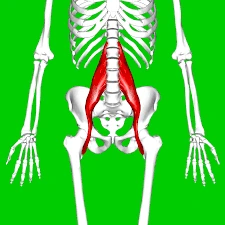
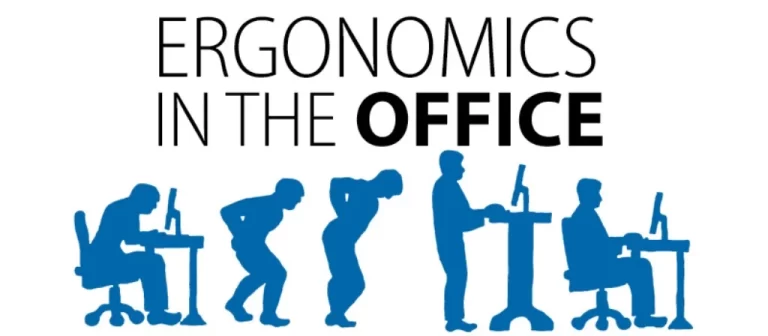
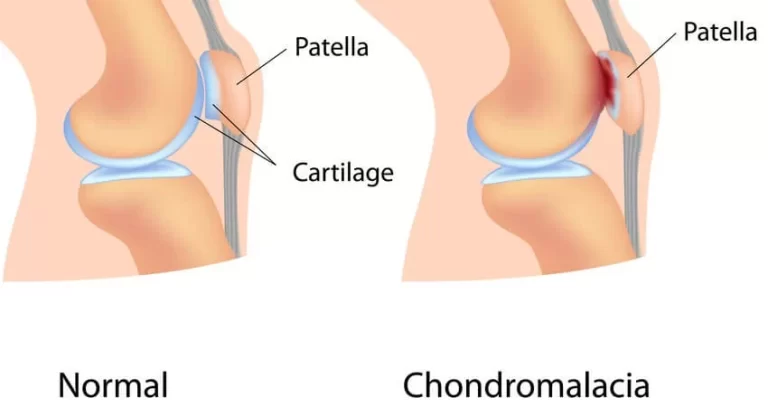
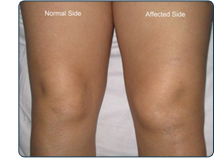
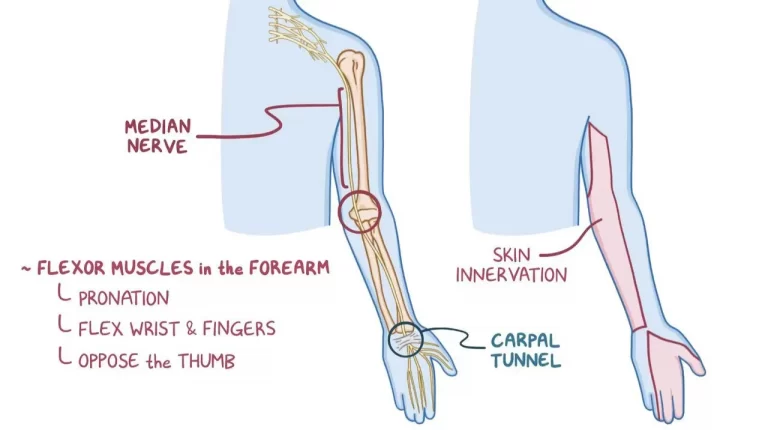
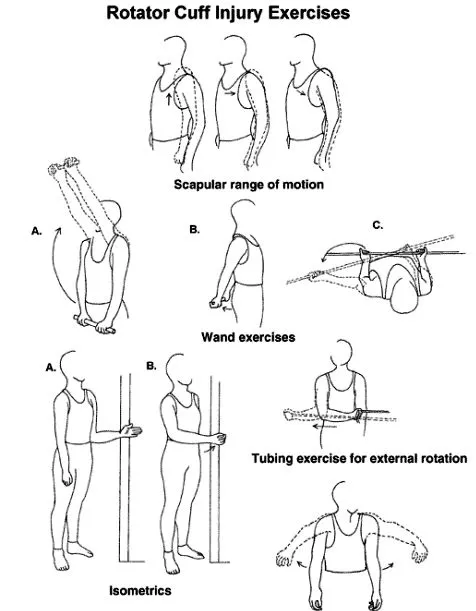
4 Comments